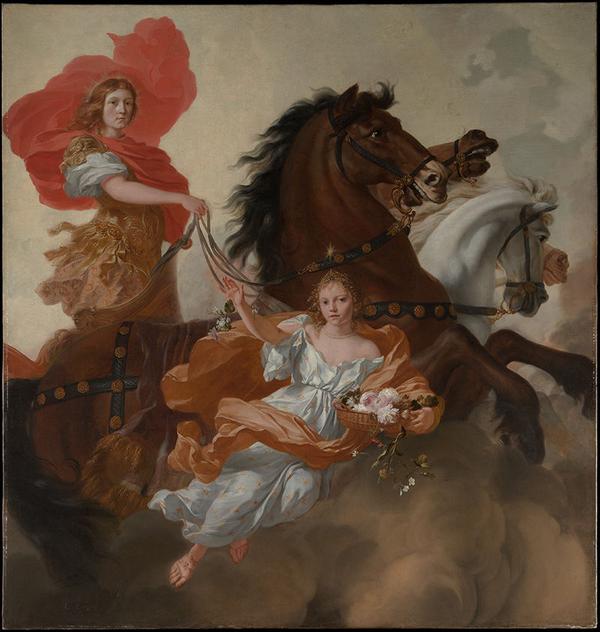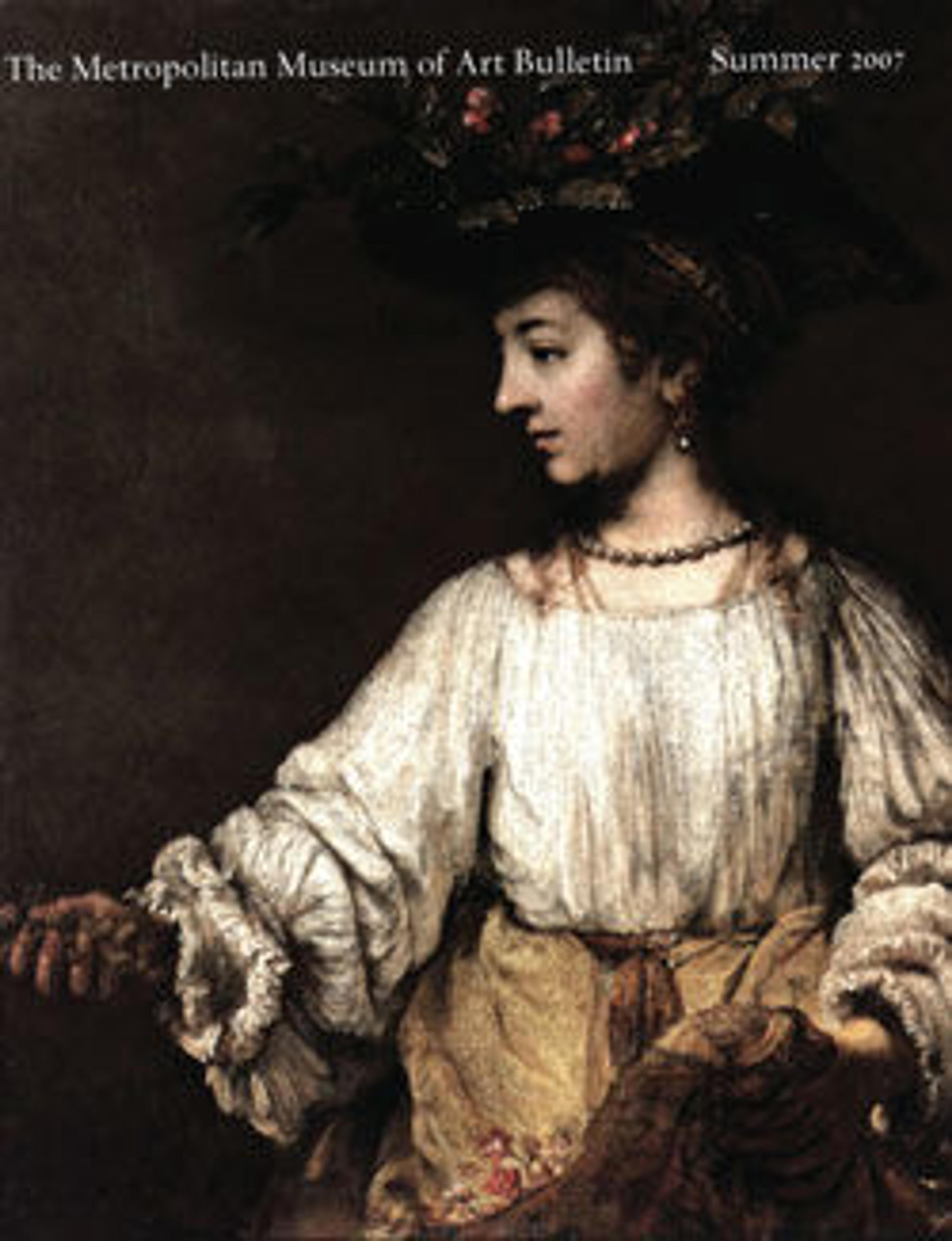Apollo and Aurora
Largely forgotten today, De Lairesse was celebrated in his lifetime as a painter and advocate for an idealizing manner based on the study of classical antiquity. This work, likely destined to hang over the mantelpiece in a grand Amsterdam home, depicts the sun god consorting with the goddess of the dawn, a popular subject in French and Italian painting at the time. The attractively individualized young faces have led to speculation that they may be disguised portraits of a newly married couple.
Artwork Details
- Title: Apollo and Aurora
- Artist: Gerard de Lairesse (Dutch, Liège 1641–1711 Amsterdam)
- Date: 1671
- Medium: Oil on canvas
- Dimensions: 80 1/2 x 76 1/8 in. (204.5 x 193.4 cm)
- Classification: Paintings
- Credit Line: Gift of Manuel E. and Ellen G. Rionda, 1943
- Object Number: 43.118
- Curatorial Department: European Paintings
Audio

5251. Gerard de Lairesse, Apollo and Aurora
NARRATOR: This interpretation of the myth of the sun god Apollo and the goddess of the dawn Aurora might seem a startling addition to a group of Dutch masterpiece paintings. Consider it in relation to the work directly across this courtyard: Rembrandt’s portrait of Aristotle. Adam Eaker.
ADAM EAKER: On the one hand, you have Rembrandt’s Aristotle Contemplating the Bust of Homer, one of the most canonical and iconic of Dutch paintings in The Met’s collection. And on the other you have this work, Gerard de Lairesse’s Apollo and Aurora, something that normally hangs in our storage.
NARRATOR: Eaker took it out of storage to remind us that Rembrandt was not always the beloved icon he is today.
ADAM EAKER: Visitors may be surprised to learn that de Lairesse was an extremely celebrated figure in his own day, very successful, who really catered to the idealist, classicizing taste that rejected Rembrandt. We see here a very luminous image of two beautiful young deities. It’s an image that reveals de Lairesse’s knowledge of classical antiquity, of Italian painting.
NARRATOR: The subject is taken straight from mythology, but the couple’s faces are individual enough to suggest they were modeled on real people. This may have been commissioned as a wedding portrait of a young couple.
Over the centuries, de Lairesse’s style eventually fell out of favor. His idealism departed from the naturalism prevalent in Dutch art.
ADAM EAKER: Nowadays, we celebrate those Dutch artists who seem to us uniquely Dutch; very local and rooted in their own circumstances. And in that perspective, de Lairesse can seem kind of bland, kind of generic, because he so successfully emulated international currents instead of depicting those uniquely Dutch subject matters or landscapes.
More Artwork
Research Resources
The Met provides unparalleled resources for research and welcomes an international community of students and scholars. The Met's Open Access API is where creators and researchers can connect to the The Met collection. Open Access data and public domain images are available for unrestricted commercial and noncommercial use without permission or fee.
To request images under copyright and other restrictions, please use this Image Request form.
Feedback
We continue to research and examine historical and cultural context for objects in The Met collection. If you have comments or questions about this object record, please complete and submit this form. The Museum looks forward to receiving your comments.
